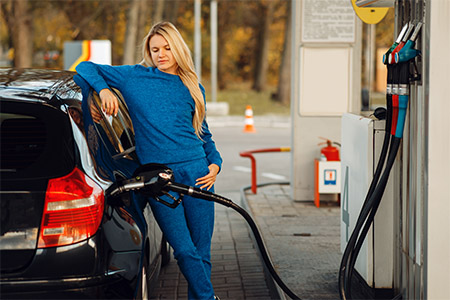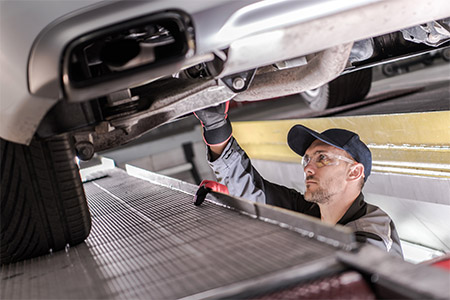
Do you want to up your driving game and make the most of every drop of fuel while promoting eco-friendly habits?
If so, then hypermiling driving is definitely a skill worth learning!
Hypermiling has gained traction in recent years, as people become more aware of their CO2 footprint and look for ways to reduce it.
But what exactly is hypermiling driving? In this blog post, we’ll explore how this practice works and the benefits it can provide.
What does hypermiling mean?
Hypermiling is a word that’s been around for quite some time now, mainly in America. It is, however, gaining more and more attention as people seek out ways to save money on fuel and reduce their carbon footprint.
Essentially, hypermiling involves changing the way you drive to get the most out of every drop of your petrol or diesel. Sometimes, a hypermiler will consider if a journey is even worth driving for – replacing the car for a bike ride or even walking.
In case driving is necessary, they will strategise a route that is not only the shortest but also involves minimal acceleration and braking. Additionally, they will aim to drive during off-peak traffic hours.
Is hypermiling good for your car?
Hypermiling a car can have both positive and negative impacts. On the positive side, hypermiling techniques can significantly increase a car’s fuel efficiency and reduce the amount of fuel consumed, resulting in lower emissions and lower fuel costs for the driver.
It can also promote a more mindful and eco-friendly approach to driving, by encouraging drivers to adopt a more patient and efficient driving style.
However, there are some potential downsides to hypermiling, such as an increased risk of accidents if drivers engage in techniques like drafting or coasting in unsafe ways (for those unsure what drafting is, this is a hypermiling technique where a driver positions their car directly behind another vehicle in order to reduce air resistance and improve fuel efficiency).
Additionally, some hypermiling practices, such as turning off the engine while driving, can be dangerous and illegal.
Ultimately, hypermiling can be a useful tool for drivers who are looking to save fuel and reduce their environmental impact, but it is important to do so safely and responsibly with full concentration.
What are hypermiling techniques?
To hypermile a car, a few techniques might be worth trying.
- Accelerate gradually and smoothly, avoiding sudden bursts of speed
- Maintain a steady speed and try to avoid unnecessary braking
- Use engine braking to slow down instead of relying on the brakes
- Avoid idling the engine unnecessarily, turn off the engine if you have to wait for more than a minute
- Keep your tyres properly inflated to reduce rolling resistance
- Avoid using the air conditioning system and other electrical systems as much as possible
- Plan your routes to avoid heavy traffic and stop-and-go situations
- Draft behind larger vehicles to reduce wind resistance
- Locate well-priced petrol stations to maximise the amount of fuel you pay for
- Use cruise control on flat, open roads (like motorways) to maintain a consistent speed
- Keep the car properly maintained, including regular oil changes, filter replacements, and tune-ups
- Consider using lighter-weight oil for better engine efficiency
- Remove unnecessary weight from the vehicle, such as unused roof racks or heavy items in the boot

Is hypermiling illegal?
Subsequent to discussing hypermiling techniques, it is important to acknowledge the safety concerns that have garnered negative attention towards “hypermilers”. It must be emphasised that like any other driving technique, hypermiling can pose a risk if applied in inappropriate road and traffic circumstances.
Coasting Dangers:
Coasting has generated some controversy for hypermilers due to extreme advocates resorting to questionable techniques to save fuel.
For example, some hypermilers put their car in neutral on downhill slopes to allow the engine to idle, while others employ a technique called Forced Auto Stop (FAS) where the car is turned off completely.
However, FAS can be incredibly dangerous as it cuts off power to the braking and steering servos, and may even engage the steering lock, putting the driver and passengers at risk.
Drafting Issues:
Drafting is another hypermiling technique that has sparked disputes. The technique originated from Nascar racing where cars would line up in close formation to enhance airflow and decrease drag on a fast superspeedway.
Although Nascar racers aim to increase their speed, hypermilers utilise the disturbed airflow behind other vehicles to improve their fuel efficiency. This is because the reduced air pressure in the wake of a leading vehicle allows the following one to attain the same speed with less energy consumption.
Nonetheless, employing this technique usually puts the hypermiler and the vehicle they are trailing at risk as they need to follow closely to attain their objective. This approach would violate the ‘two-second’ golden rule, which dictates that a vehicle must maintain a two-second following distance in dry conditions to allow ample reaction and braking time should the leading car abruptly decelerate.
It is absolutely crucial to be conscious of other drivers on the road and refrain from jeopardising yourself or others in pursuit of saving fuel.
